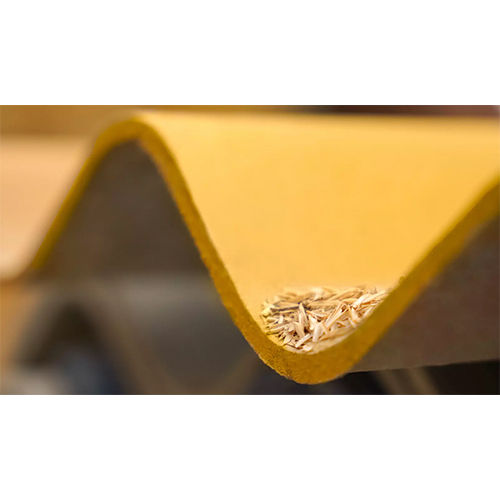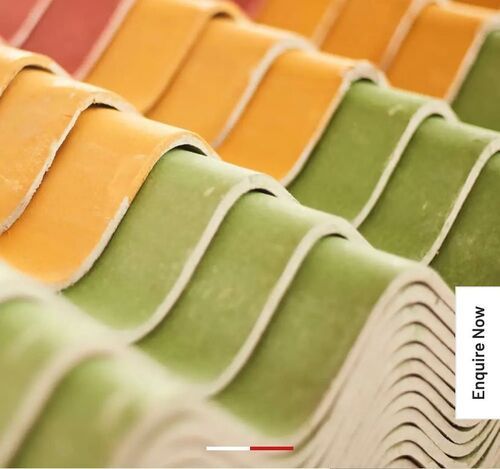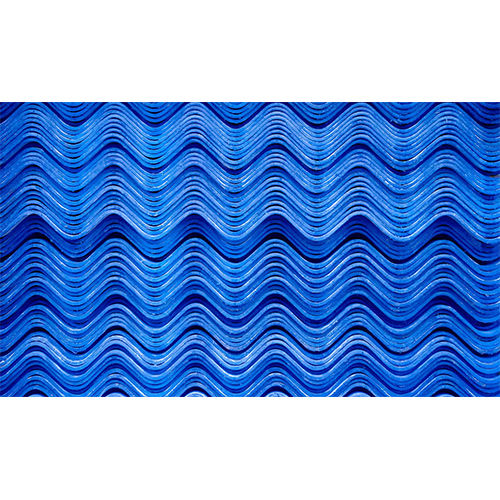
EVEREST Yellow Cement Roofing Sheets
Product Details:
- Material Other
- Tile Material Asbestos Fiber/Cement
- Tile Type Other
- Type Roofing Sheets
- Size FIX
- Shape FIX
- Pattern CORRUGATED
- Click to view more
EVEREST Yellow Cement Roofing Sheets Price And Quantity
- 225 INR/Meter
- 800 Meter
EVEREST Yellow Cement Roofing Sheets Product Specifications
- FIX
- Other
- 6 Millimeter (mm)
- FIX
- Normal
- CORRUGATED
- 1.05 Meter (m)
- Asbestos Fiber/Cement
- Roofing Sheets
- 1.5 TO 12 Foot (ft)
- Other
EVEREST Yellow Cement Roofing Sheets Trade Information
- 5000 Meter Per Month
- 10 Days
- PACKED
- North India West India
- ISI
Product Description
Yellow Cement Sheets generally refer to flat, rigid panels made from a mixture of cement, fibers, and sometimes other materials. They come in various types, each with specific characteristics and applications. These sheets are commonly used in construction for roofing, siding, and cladding. These are rigid sheets made from cement and other additives. They are commonly used as a substrate for tile and stone installations in both interior and exterior applications. Yellow Cement Sheets come with added pigments to provide a specific color. These can be used for aesthetic purposes in roofing or siding applications.
ISI Specification
|
ISI SPECIFICATION TECHNICAL DATA |
||||
|
Standard lengths in (Metres) |
3.00, 2.75, 2.25, 2.00, 1.75, 1.50 |
Tolerance (in mm) |
Maximum unsupported overhang |
300 mm |
|
Thickness |
6 mm |
Maximum Purlin Spacing for roofing |
1.4 M |
|
|
Pitch |
146 mm |
Maximum Rail spacing for Vertical cladding |
1.7 M |
|
|
Depth |
48 mm |
Section modulus |
ZB: 75 cm3 ZT: 85 cm3 |
|
|
Overall Width |
1050 mm |
Moment of Rupture |
200 kg/cm2 |
|
|
Effective Width |
1010 mm |
Running Metres per tonne |
78 (approx) |
|
|
Minimum End lap |
150 mm (for slopes 180 and above) |
Colour |
Light Grey |
|
Sizing
For Roof:
- Let us assume the slope length is L metres
- To cover this length, a minimum of N number of sheets are; where N = L - 0.200/2.8 (a whole number)
- Maximum lap loss is M metre Where M = (N-1) x 0.200
- Maximum sheet length required is P; where P = L + M => L + (N-1) x 0.200 (rounded off to next digit divisible by 0.25)
- Once P is obtained, sizing should be done keeping the number of sheets at N
- Check if the slope can be covered by (P - 0.25)
- Check that the number of purlins does not exceed - K; where K = L - ( a1 + a2) / 1.40 + 1 (a whole number); where a1 = distance between the eaves purling and the eaves edge in - Metre; where a2 = distance between the eaves purling and the eaves edge in - Metre.
For Wall Cladding : Most economical length is 1.75 M, which allows a rail spacing of 1.6 M.
Estimating
For both roof and wall cladding, the number of sheets in a particular row N = L - 0.04 / 1.01 (a whole number); where L = length of the shed in metres.





 Send Inquiry
Send Inquiry Send SMS
Send SMS Call Me Free
Call Me Free